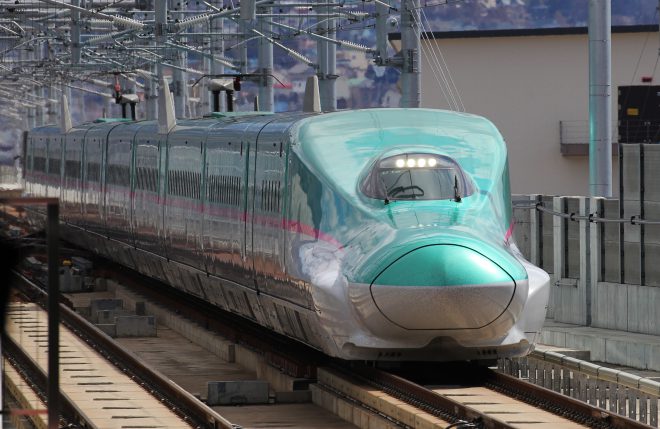Shinkansen effects on tourism in Hokkaido still limited
March 26, 2017
Sapporo- In the year after the opening of the Hokkaido Shinkansen high-speed railway service, the number of visitors increased mainly in Hakodate, southern Hokkaido, the gateway to Japan’s northernmost main island.
But positive effects on tourism from the 149-kilometer Shinkansen line linking Honshu, the largest of Japan’s four main islands, and Hokkaido through the 54-kilometer undersea Seikan Tunnel have been limited in areas north of Hakodate.
“People visited here from curiosity in the first year,” said Isao Omori, mayor of the Hokkaido town of Kikonai, located along the Hokkaido Shinkansen Line.
In the second year and ahead, related officials will likely continue trial and error to attract more tourists to Hokkaido.
The Hokkaido Shinkansen Line opened on March 26, 2016, between Shin-Aomori Station in Aomori Prefecture and Shin-Hakodate-Hokuto Station in the Hokkaido city of Hokuto, near Hakodate. From the opening to the end of February this year, about 2.2 million passengers used the new high-speed train service, according to Hokkaido Railway Co., or JR Hokkaido.
Some 6,500 people were on board per day on average, up 68 pct from a year before on the conventional railway line connecting Nakaoguni in Aomori with Kikonai.
The seat occupancy rate averaged 33 pct, higher than 26 pct estimated before the opening. But the rate stood at 19 pct in January and February after staying above 40 pct in the summer last year.
While giving a high evaluation to the higher-than-forecast average occupancy rate, JR Hokkaido President Osamu Shimada said, “We will continue to take measures for (increasing the number of passengers in) the off season.”
Hokkaido areas along the Shinkansen line have enjoyed growth in the number of visitors.
Goryokaku Tower in Hakodate saw a year-on-year increase of some 30 pct in the number of visitors between April last year and February this year. Tourists from the Kanto eastern region including Tokyo and the Tohoku northeastern region accounted for half of the total visitors to the tower.
The annual number of visitors is expected to top one million for the first time in 10 years, in the current fiscal year ending this month, according to officials of the tower operator.
“Misogino Sato Kikonai,” a roadside rest area opened in January last year in front of Kikonai Station, has attracted more than 600,000 visitors, three times as many as the initial estimate. The station is Hokkaido Shinkansen Line’s first stop in Hokkaido for visitors from the main island of Honshu.
“Many people visited us as we offer local products of southern Hokkaido,” said Fumihiro Asari, head of the rest area operator.
“We will not ease up on our publicity campaign outside Hokkaido while improving our facility,” the mayor of Kikonai said.
Yutaka Soejima, manager of the Bank of Japan’s Hakodate branch, said that there were certainly positive economic effects from the Hokkaido Shinkansen Line in Hakodate and nearby areas. In order to attract tourists to Hokkaido areas other than Hakodate, Soejima highlighted the need to “improve transportation and the attractiveness of tourism resources.” Jiji Press
Latest Videos
- THE UNTOLD STORY EXPERT INSIGHTS INTO THE UKRAINE
- NEGOTIATING A NEW ORDER US RUSSIA TALKS ON UKRAIN
- Ukraine: A Pawn in the Geopolitical Game? Will Trump Intervene?
- US VP VANCE CRITICIZES EUROPEAN DEMOCRACIES AT MUNICH SECURITY CONFERENCE
- UNCOVERING THE WEB OF DECEIT: CIA INFILTRATION OF THE MEDIA
- SHIFTING SANDS: TULSI GABBARD’S CONFIRMATION AND THE EVOLVING GLOBAL LANDSCAPE
- FAUCI SCANDAL: A THREAT TO GLOBAL HEALTH AND DEMOCRACY






